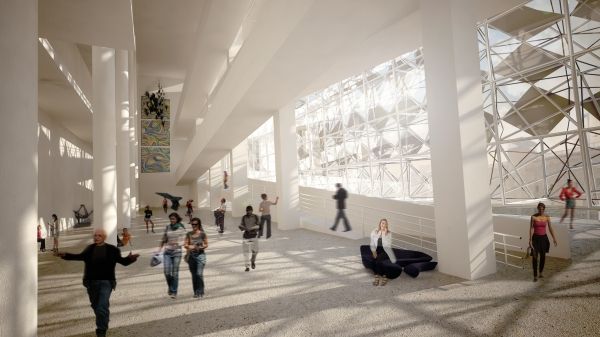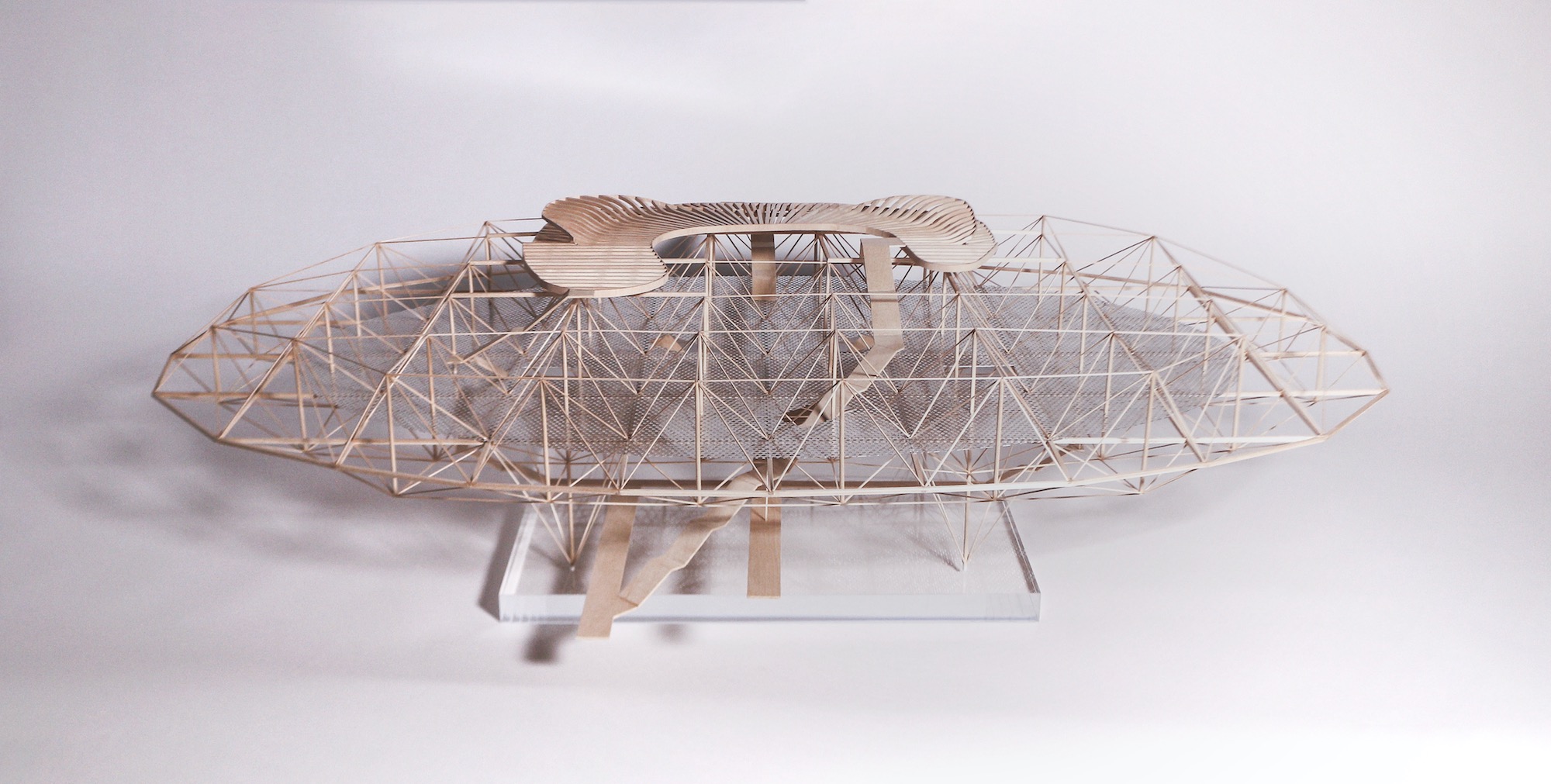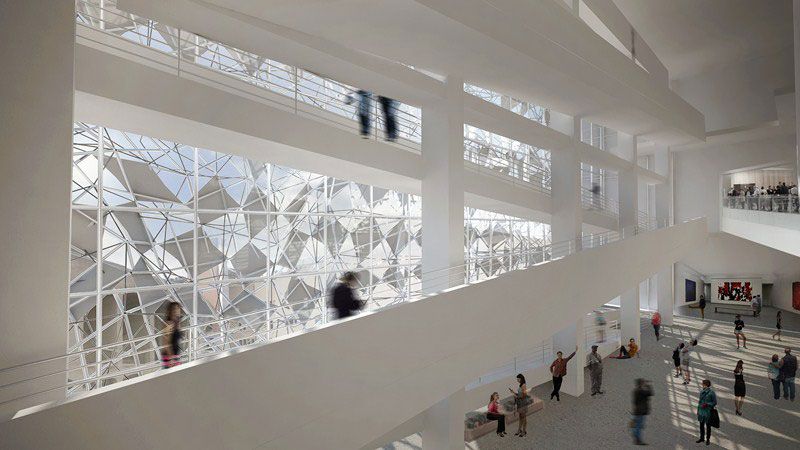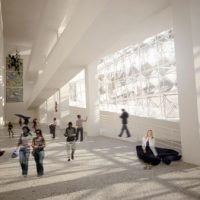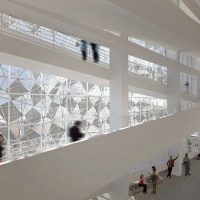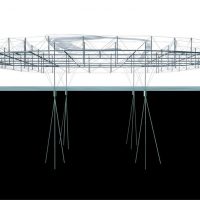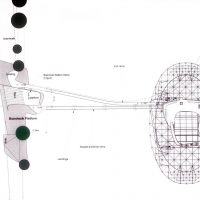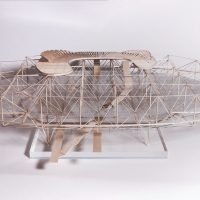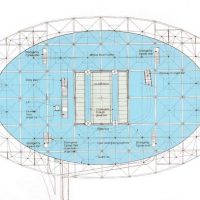“Adaptation is the evolutionary process whereby a population becomes better suited to its habitat. This process takes place over many generations, and is one of the basic phenomena of biology.”– On the Origin of Species, Charles Darwin
Our lives are surrounded by constantly changing forces of nature and the environment. Everything is in a constant state of flux, with varying degrees of dynamism. Our lives too, are always in motion. The spaces we inhabit are constantly changing as well, although the change is slow and occurs through non-physical conditions. The physical state of the inhabitable spaces is more or less constant and not in motion.
A traditional building skin provides stability, regulates air pressure (fenestration), and protects the interiors from direct environmental factors (sunlight, rain, and wind). Building skins are a vital component to resolve the issues of responsive architecture as they are a medium through which intelligence can be imparted to the building system to respond to an environmental stimulus. Thus the key characteristic of an effective intelligent building skin is its ability to modify energy flows through the building envelope by regulation, enhancement, attenuation, rejection, or entrapment.
The term ‘adaptation’ is commonly used in architecture in relation to the changing morphologies of the architectural artifact. These changing morphologies have been a result of timely changes and the evolution of architecture as a social entity, technological product, and practice. Through years of architectural evolution, changes have occurred in notions of how buildings are conceived and built. The architectural morphologies adapt to the time, in which they are conceived and realized.
These adaptive morphologies are a result of changing times, social form, economic support, user needs, and environmental effects. The environmental changes that occur in a given time, such as a day, can be a constant force of changes that need to occur in an architectural object, leading to local adaptations. The global climatic change, occurring over a course of time, creates forces for architectural objects to change over the years, in order to survive and sustain themselves. Adaptation in architecture is a long-term process that occurs with time and generations, where improvements in technology, economic support, as well as human thought-process, contribute to the adaptive response.
Adaptation occurs through generations, with constant improvements, feedback evaluations, and survival of the fittest, based on certain fitness criteria. Many projects dealing with adaptive architecture can be sub-categorized adaptation as interactive, dynamic, kinetic, or responsive architecture.
An intelligent pre-programmed mechanism of response and feedback needs to be embedded in the architecture, with real-time response and improvisation, for it to be termed ‘adaptive’. It is a complex phenomenon with a multi-layered non-linear process.
Buildings do not merely provide shade and protection from the external environment but have a multitude of functions to perform and a range of conditions to adapt and respond to. Architecture has transformed from being functional to intelligent, with changing requirements of the time. The social environment is a constantly changing parameter and architecture needs to modulate and change with it, too.
Since its very origin, architecture has been evolving and developing to serve the needs of the cities and their people. In today’s complex lives, however, with the fluctuating parameters and conditions of the cities and changing environments, architecture needs to serve a multitude of functions through its life cycle. Thus it is necessary that architecture responds to all the fluctuating parameters and serves the purpose of its existence. Responsiveness can be observed at various scales and in various elements of the whole system, within the architectural realm.
The works of Diller & Scofidio (Blur), dECOi (Aegis Hypo-Surface), and NOX (the Freshwater Pavilion, NL); are all classifiable as types of responsive architecture (Diller &Scofidio 2002; Liu 2002; Lootsma and Spuybroek 1997). Each of these works monitors fluctuations within the environment and alters their form in response to these changes. The Blur project by Diller & Scofidio relies upon the responsive characteristics of a cloud to change its form while blowing in the wind. In the work of dECOi, responsiveness is enabled by a programmable facade and a programmable audio-visual interior in the work of NOX. All of these works depend upon the abilities of computers to continuously calculate and join programmable digital models to the real world and the events that shape it.
Adaptation as a process has been conceived in various disciplines with similar approaches and goals. This definition offers a direct translation into architectural conceptualization. We can consider the building to be a system that adapts its behavior to information acquired about its users. Information external to the building (system) could also be integrated into the process, for example, weather data, energy prices, demands of neighboring buildings, etc. Adaptive Architecture thus has the capability to respond to a number of parameters with time. Time is an integral factor driving adaptation in architecture. Thus adaptive architecture can be said to be Responsive Architecture evolving with time.
- Internal Render for 4-strut tensegrity skin proposal for MACBA, Barcelona. ©adaptive[skins] 2013
- Internal Render for 4-strut tensegrity skin proposal for MACBA, Barcelona. ©adaptive[skins] 2013
- Photo: Copyright Beat Widmer
- Photo: Copyright Beat Widmer
- Photo: Copyright Beat Widmer
- Photo: Copyright Beat Widmer
- Photo: Copyright Beat Widmer
- Photo: Copyright Beat Widmer
By Sushant Verma


